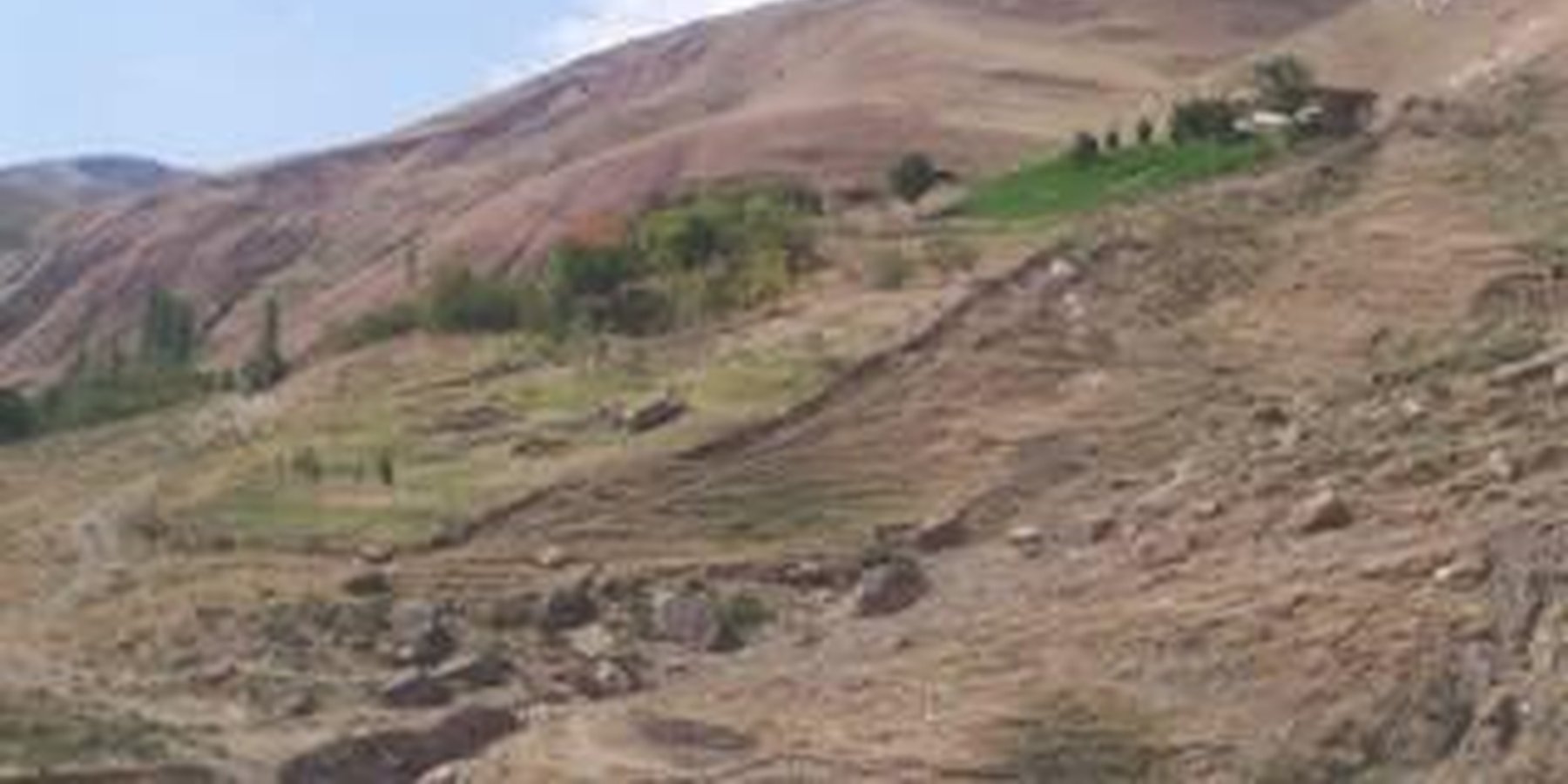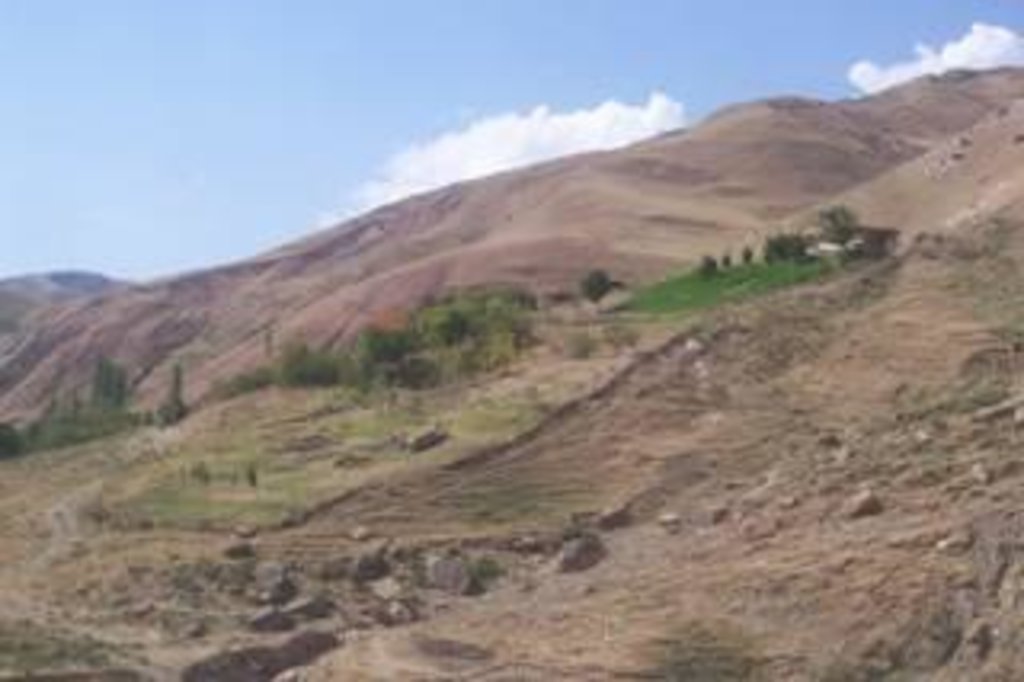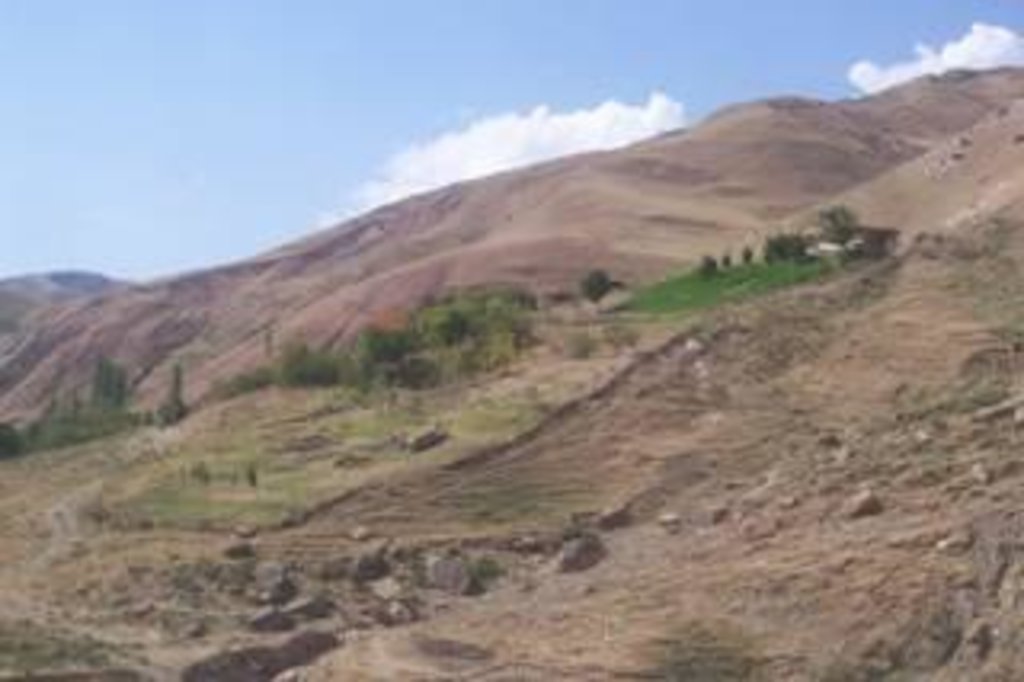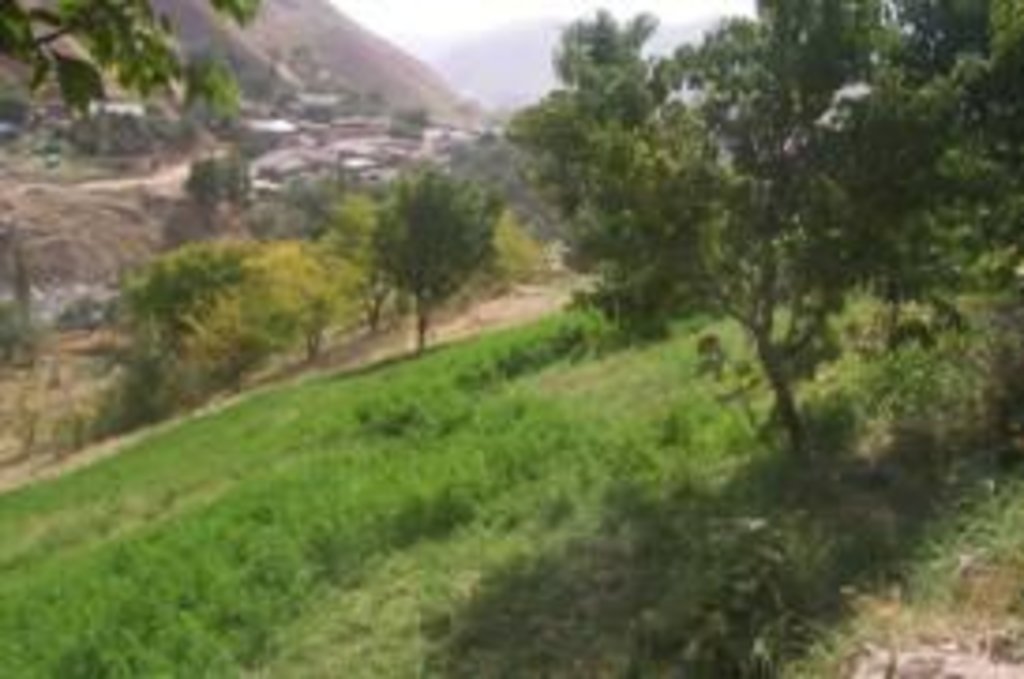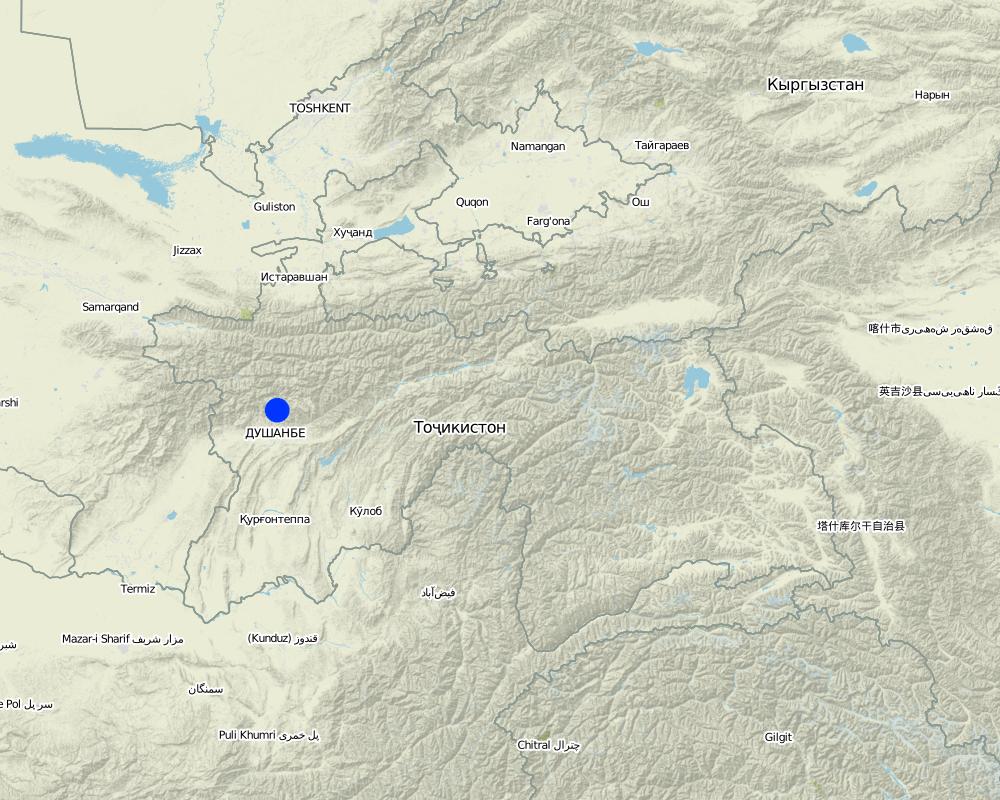Enhancement of existing SLM technologies into demonstration sites [塔吉克斯坦]
- 创建:
- 更新:
- 编制者: Habib Kamolidinov
- 编辑者: –
- 审查者: David Streiff, Alexandra Gavilano
ADB, GEF, GITEC, DMC. Rural Development Project
approaches_2634 - 塔吉克斯坦
查看章节
全部展开 全部收起1. 一般信息
1.2 参与方法评估和文件编制的资源人员和机构的联系方式
SLM专业人员:
有助于对方法进行记录/评估的机构名称(如相关)
GITEC/ADB/DMC Rural Development Project Land Management Institute - 塔吉克斯坦1.3 关于使用通过WOCAT记录的数据的条件
编制者和关键资源人员接受有关使用通过WOCAT记录数据的条件。:
是
1.4 SLM技术问卷的参考
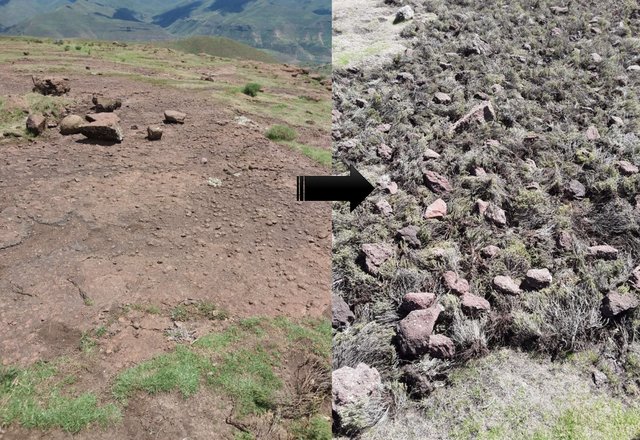
Brush Layering [莱索托]
The technology requires removal of invaders as resources for layering. The technology enhances accumulation of silt and moisture storage in dry-lands due to increased organic matter content in the soil from the brush.
- 编制者: Matoka Moshoeshoe
2. SLM方法的描述
2.1 该方法的简要说明
Enhancement of existing self developed SLM technologies into demonstration sites.
2.2 该方法的详细说明
该方法的详细说明:
Aims / objectives: The farmer clearly stated that his prime, initial aim in taking over this “ruined and abandoned land” was to improve and better assure the quality of his family’s lifestyle, through enhanced and assured food and fodder production. He also recognised the potential for future profit, through sale of his excess produce to market. Currently, the family has almost no need to buy food (and fodder) from nearby markets, apart from flour (for bread making). This is a large cost saving factor. In hindsight, the farmer sees that he has dramatically improved land quality within the enclosure through mitigating erosion and increasing year-round vegetation cover
Methods: The success of the enclosure is the result of using several methods. The fence construction was critical to keep out both domestic animals (cattle, goats and sheep) and wild ones, (pigs and wolves) from what was to become a vegetation rich “island” amoungst the bare and degraded hillslopes. Stone clearing (by hand) of the whole area inside the enclosure greatly improved land quality due to enhanced soil depth and subsequent vegetative growth. Tree planting (apple, cherry, apricot, pear) was critical to provide family food. Lucerne planting provided food for the farmer’s animals (1 cow, 10 goats) that provide milk and meat. A small area of land near the homestead (approx. 20 x 20 metres) was levelled into several small terraces for vegetable production (potatoes, garlic, onion, peppers, tomatoes). Irrigation is conducted within the upper part of the enclosure; water being provided by a 20mm polythene pipe that brings water from 1.5 km away where there is a permanent spring.
Stages of implementation: The family (Enomali) first occupied this land in 1984. The first task was tree planting – the first orchard trees – on 0.1 ha of the current enclosure. This was fenced, then after nine family members left (to work in Dushanbe) he expanded the fence to the current 0.2 ha and continued to plant trees. Stone removal continued through the 1990s and even to today. The lucerne and vegetable gardens were initiated in the 1990s and continue to be enriched. The fodder, trees and vegetable production is an ongoing task, as is feeding the animals with the home-grown fodder. He continues to plant orchard trees every year and currently has more than 100. He gained a “certificate” of ownership” in 2008.
Role of stakeholders: All of the work within the enclosure has been conducted by family members. The main two are the husband and wife, though in the early stone clearing and fence construction days his 1st cousin assisted. His son and daughter in law have also assisted (though the son now works in Dushanbe) – even the young grandchildren help.
2.3 该方法的照片
2.5 采用该方法的国家/地区/地点
国家:
塔吉克斯坦
区域/州/省:
RRP
有关地点的进一步说明:
Varzob, Luchob
Map
×2.6 该方法的开始和终止日期
注明开始年份:
1984
终止年份(若不再采用该方法):
2014
注释:
The small area was all that the family could manage, as there was an initial large workload, clearing stones and fence building, etc
2.7 方法的类型
- Local initiative enhanced by programme activity
2.8 该方法的主要目的/目标
The Approach focused on SLM only
The prime, initial aim in taking over this “ruined and abandoned land” was to improve and better assure the quality of his family’s lifestyle through enhanced and assured food and fodder production. He also recognised the potential for future profit, through sale of his excess produce to market. Now, he wants to expand the area within the enclosure to 1 ha with extra fencing and supplementary irrigation supply from another spring.
The SLM Approach addressed the following problems: The main problem to be addressed was reducing poverty, to help achieve a better and more sustainable lifestyle by producing better quality food and fodder.
2.9 推动或妨碍实施本办法所适用的技术的条件
社会/文化/宗教规范和价值观
- 阻碍
This family were one of the first in this region to take over this area of “ruined” land and begin improvements. However, the farmer did not see this as arduous, rather he welcomed the chance to work hard and provide for his family
Treatment through the SLM Approach: Family working together to improve land
财务资源和服务的可用性/可得性
- 阻碍
The farmer could improve his SLM but would need financial assistance
Treatment through the SLM Approach:
机构设置
- 阻碍
He has now gained a certificate of ownership that ensures ownership until his death. The government still owns the land and he pays $5 US a year in tax (total).
Treatment through the SLM Approach: Application for land entitlement certificate
法律框架(土地使用权、土地和水使用权)
- 启动
The existing land ownership, land use rights / water rights helped a little the approach implementation: There was no compelling need for the farmer to get a “entitlement certificate” but he did so anyway.
- 阻碍
Not applicable. The water (irrigation) is “free” and there are no current disputes over his use of the spring water
Treatment through the SLM Approach:
了解SLM,获得技术支持
- 阻碍
The family provided their own solutions to any problems since the project began in 1984
Treatment through the SLM Approach:
工作量、人力资源可用性
- 阻碍
The family have worked consistently for 26 years, slowly but have created better land and vegetation conditions
Treatment through the SLM Approach:
3. 相关利益相关者的参与和角色
3.1 该方法涉及的利益相关者及其职责
- 当地土地使用者/当地社区
Only the land users (family)
The men focused on the heavier labour tasks of fence building and stone removal. The women focus on the garden, and fruit production and bee keeping.
3.2 当地土地使用者/当地社区参与该方法的不同阶段
| 当地土地使用者/当地社区的参与 | 指定参与人员并描述活动 | |
|---|---|---|
| 启动/动机 | 自我动员 | The extended family, when available |
| 计划 | 自我动员 | Principally the husband and wife – Mr Enomali and wife |
| 实施 | 自我动员 | The family |
| 监测/评估 | 自我动员 | Mr Enomali and his wife are continuously evaluating the production quantities and quality from their labours |
| Research | 无 | Not applicable |
3.4 有关SLM技术选择的决策
具体说明谁有权决定选择要实施的技术:
- 仅限土地使用者(自主)
解释:
The family has chosen and implemented all methods within the enclosure with no external assistance of any type.
Decisions on the method of implementing the SLM Technology were made by by land users* alone (self-initiative / bottom-up). The family has chosen and implemented all methods within the enclosure with no external assistance of any type.
4. 技术支持、能力建设和知识管理
4.1 能力建设/培训
是否为土地使用者/其他利益相关者提供培训?:
否
4.2 咨询服务
土地使用者有权使用咨询服务吗?:
否
4.3 机构强化(组织发展)
是否通过这种方法建立或加强了机构?:
- 否
4.4 监测和评估
监测和评估是该方法的一部分吗?:
是
注释:
bio-physical aspects were ad hoc monitored by land users through observations; indicators: The family, generally, take note of the effect of their practices in terms of production
economic / production aspects were None monitored by None through observations; indicators: None
There were no changes in the Approach as a result of monitoring and evaluation: None
There were no changes in the Technology as a result of monitoring and evaluation: None
4.5 研究
研究是该方法的一部分吗?
否
5. 融资和外部物质支持
5.1 该方法中SLM组成部分的年度预算
如果不知道准确的年度预算,请给出一个范围:
- < 2,000
注释(例如主要的资助来源/主要捐助者):
Approach costs were met by the following donors: local community / land user(s) (The Emomali family): 100.0%
5.2 为土地使用者提供财政/物质支援
土地使用者是否获得实施该技术的财政/物质支持?:
否
5.3 对特定投入的补贴(包括劳动力)
如果土地使用者的劳动力是一项重要的投入,那么是不是:
- 自愿
注释:
all labour was family-provided
5.4 信用
是否根据SLM活动的方法给予信用值?:
否
6. 影响分析和结论性陈述
6.1 方法的影响
该方法是否帮助土地使用者实施和维护SLM技术?:
- 否
- 是,很少
- 是,中等
- 是,支持力度很大
There is a dramatic visible difference in both the degree of erosion and vegetative land cover between the enclosure and the surrounding land (see picture in 1.3.3). Also, the production quantity and quality of food and fodder from this enclosure has continued to increase.
该方法是否有助于社会和经济弱势群体?:
- 否
- 是,很少
- 是,中等
- 是,支持力度很大
After the fall of the Soviet Union, many in Tajikistan experienced poverty, particularly food shortages. This farmer foresaw this and commenced his enclosure enrichment work. In this way he ensured
Did other land users / projects adopt the Approach?
- 否
- 是,很少
- 是,中等
- 是,支持力度很大
The farmer says that several of his neighbours have been doing similar interventions to his – fencing, stone removal, planting orchards etc. What he has done is very visible from the main road through the valley, and many people have observed the results of his efforts over the years
Did the Approach lead to improved livelihoods / human well-being?
- 否
- 是,很少
- 是,中等
- 是,支持力度很大
His family eat well, plentiful and very fresh/organic produce from their own household plot
Did the Approach help to alleviate poverty?
- 否
- 是,很少
- 是,中等
- 是,支持力度很大
6.2 土地使用者实施SLM的主要动机
- 增加生产
- 环境意识
- well-being and livelihoods improvement
6.3 方法活动的可持续性
土地使用者能否维持通过该方法实施的措施(无外部支持的情况下)?:
- 是
若是,请说明如何维持:
The farmer never had external “support” in the first place, so his approach continues to improve, with no support.
6.4 该方法的长处/优点
| 土地使用者眼中的长处/优势/机会 |
|---|
| As above, as these words were transcribed during the farmer interview, on site |
| 编制者或其他关键资源人员认为的长处/优势/机会 |
|---|
| Though not an initial objective, the farmer now recognises that he has dramatically improved land quality and vegetation cover within the enclosure, further assuring continued increased production through improved soil conditions (How to sustain/ enhance this strength: By continuing to do what he has been doing for 20+ years already. ) |
| The farmer has achieved what he wanted; assured quantity and quality of food/fodder production to assure his family’s livelihood. (How to sustain/ enhance this strength: He wants to increase his enclosure area by 5 times. To do this he will require fencing and pipe for irrigation.) |
6.5 该方法的弱点/缺点以及克服它们的方法
| 土地使用者认为的弱点/缺点/风险 | 如何克服它们? |
|---|---|
| As above, as these were the sentiments of the farmer during on site interview |
| 编制者或其他关键资源人员认为的弱点/缺点/风险 | 如何克服它们? |
|---|---|
| The farmer does not have sufficient financial means to purchase the additional fencing and irrigation pipe he requires to extend the current enclosure area to 1 ha size | Involvement of local banks |
| The total lack of institutional support. This has not necessarily negatively impacted on the farmer – but rather has led to a reduced uptake of his (excellent) practices elsewhere, both locally and nationally. | Immediate visits of local agronomic staff (governmental) to record the modalities of what has been achieved at this site, to help ensure the wider implementation for improved land quality and vegetative cover, at a more national level. |
7. 参考和链接
7.1 方法/信息来源
- 实地考察、实地调查
- 与土地使用者的访谈
7.2 参考可用出版物
标题、作者、年份、ISBN:
There is no relevant documentation
链接和模块
全部展开 全部收起链接

Brush Layering [莱索托]
The technology requires removal of invaders as resources for layering. The technology enhances accumulation of silt and moisture storage in dry-lands due to increased organic matter content in the soil from the brush.
- 编制者: Matoka Moshoeshoe
模块
无模块


